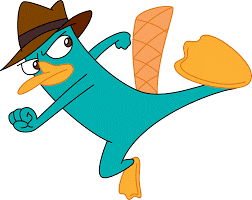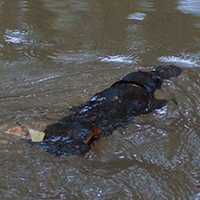Under Cover Down Under
Spying on Platypuses in Australia

Growing up, weekend mornings used to be dedicated to watching cartoons and eating sugary cereal.  Naturally, Phineas and Ferb was frequently blasting through the television. We always wanted to tag along with Phineas and Ferb’s pet, Perry the Platypus. While his owners never thought he did much, he was actually always partaking in secret spy missions, sliding through tunnels, taking down villains, and saving the world from destruction.
Naturally, Phineas and Ferb was frequently blasting through the television. We always wanted to tag along with Phineas and Ferb’s pet, Perry the Platypus. While his owners never thought he did much, he was actually always partaking in secret spy missions, sliding through tunnels, taking down villains, and saving the world from destruction.
This past weekend, the roles reversed. After chugging a cup of instant coffee and choking down a piece of accidentally-burnt toast all before sunrise, we found ourselves huddled under a bridge in Australia. We squinted at the murky water of Peterson Creek, anxiously trying to spy on Perry’s platypus friends and catch a glimpse of them in action.
When we first left our home universities for study abroad, we never expected to end up in Yungaburra, Queensland, perched on the side of a creek in the middle of a rainforest fragment. At precisely 6:45 am, with fourteen classmates and watches synchronized to the second, we began the first of our two hour-long morning observations of Perry’s mates. Despite our grogginess, the platypuses were wide-awake. These egg-laying mammals, also known as monotremes, are mostly nocturnal, feeding on aquatic invertebrates from evening until morning. While these platypuses did not have high-tech gadgets (or a cool hat) like Agent Perry, the males are equipped with venomous spurs on each back ankle, used to fend off potential rivals. All platypuses also have a seemingly sixth sense when diving for food. With thousands of electroreceptors in their long, broad bills, they can “see” their underwater surroundings, even with their eyes firmly shut.
The walk to our site was shaded by trees that were planted almost twenty years ago, as part of a reforestation project, implemented by farmers who donated this land to be made available to the public. Before these changes, weeds and erosion overran the creek. While the area is still surrounded by agriculture, it is now a thriving rainforest fragment, acting as a hotspot for wildlife. Trying our best to camouflage with our surroundings, our mission was to observe the diving habits of these platypuses, as well as attempt to determine the number of platypuses inhabiting a 650-meter section of the creek. Our class split up into pairs in order to survey nine different sections along the water. As a platypus entered our site, we noted its time of arrival, as well as the duration of its dives and time it spent on the water’s surface. The time was once again recorded as the platypus swam out of sight. After an hour, we combined data to attempt to track platypus movements and speculate the minimum number of individuals. Following other study methods, we used the ratio of time spent diving and time on the water’s surface to calculate foraging efficiency, which is essentially the availability of yummy grub. In better feeding conditions, like we found in Peterson Creek, a platypus will fill up its cheek pouches quickly, spending less time underwater and more time on the surface eating the food it has collected. Platypuses are just like college students! Back in the US, when food choices are abundant at your university’s dining hall, you’ll quickly load your plate and finish it slowly. However, just before close, when only scraps remain, you will take your time searching for food and easily finish your small meal.
Much to our pleasant surprise, we observed at least ten different platypuses over the course of the two days, totaling four more than previous studies in this site, which were conducted by our program in 2009, 2010, and 2013. Not only does this result in more silent squealing in excitement for us, it also opens an investigation as to what caused this change. Like Agent Perry, we put on our spy hats and got to work. Since around 2013, Yungaburra has lacked a sufficient wet season, negatively impacting certain platypus habitats including some branches of Peterson Creek. Perhaps, this could explain the additional platypuses we viewed during our mission, as they may have commuted from shallower areas that have become less desirable due to the recent lack of rainfall.
Although we saw more platypuses in this area than past groups, the animals were not necessarily competing with each other for food. While the reforestation project around the creek was successful, the restored rainforest area is still a fragment surrounded by land cleared for agriculture. Previous studies, such as those conducted by Kruuk in 1993 and Milione and Harding in 2009, have shown that an increase in agricultural areas results in higher nutrient runoff. The added nutrients leads to more food availability for platypuses, increasing their numbers. This was likely the case at our site, due to the surrounding farmland.
As kids, we used to repeat verbatim Phineas’ common saying, “He’s just a platypus, they don’t do much.” However, after completing our mission in Australia, we have come to realize this is far from true. While they are elusive creatures, we learned that with patience and a couple early mornings, you can watch them complete their very own daily missions.
 Skip to main content
Skip to main content
